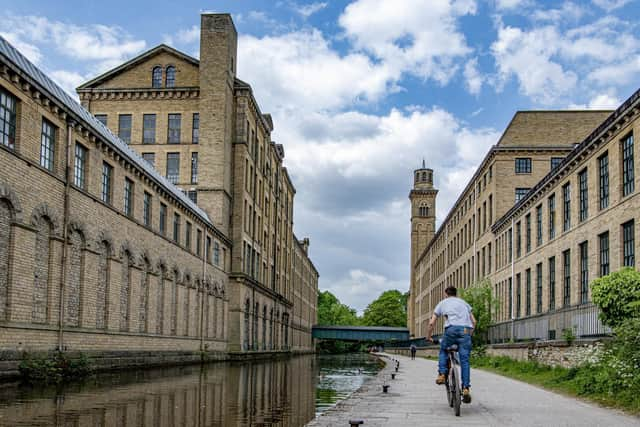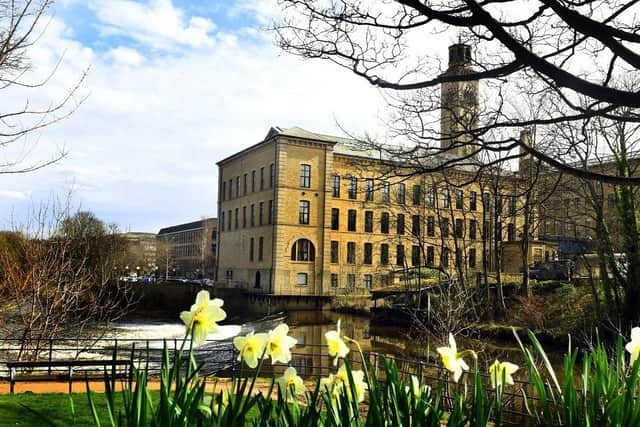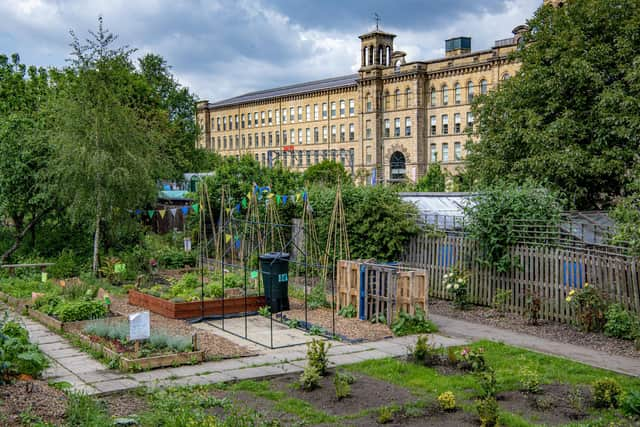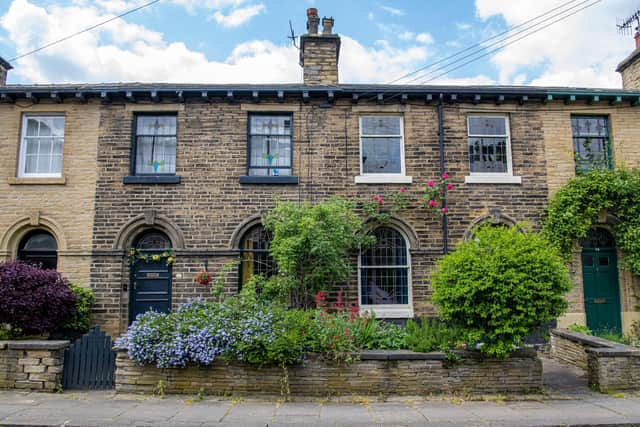Saltaire: The fascinating history of the 19th century Yorkshire village visited by Helen Skelton and Dan Walker built by Sir Titus Salt and the origins of its name
The second episode of Dan and Helen’s Pennine Adventure, which aired on Tuesday (August 22), evoked a positive reaction from fans who expressed their enjoyment of the show on Facebook. Part of the episode saw two friends Dan and Helen learn all about the rich history of Saltaire, a village built by Sir Titus Salt.
Dan sat in a canal boat with local historian Maria Glot who shared some interesting facts about Mr Salt’s upbringing and what brought him to the area now known as Saltaire. Ms Glot explained that working conditions were very poor in Bradford where he lived and diseases such as Typhoid and Cholera were killing residents which prompted him to leave Bradford.
Advertisement
Hide AdAdvertisement
Hide AdShe goes on to explain why he chose to settle in Saltaire: “We are four miles north of Bradford. At the bottom of the site is the River Aire, good clean water for washing, next to the River Aire, look, already in place, the Leeds and Liverpool Canal. He said: ‘give me 49 acres, this is the spot that will make me money. And another reason why Titus liked this area is because the water is second to none.”


Meanwhile, Helen visited Victoria Hall which was opened in 1871 and its purpose was to be a centre for recreation, culture and learning. It was built to enjoy music and art. Helen met organ enthusiast David Lowe who played a Wurlitzer organ which was first invented by Franz Rudolph Wurlitzer. It became popular across America from 1910 where they would accompany silent movies and later films with sound, affectionately known as talkies.
Helen and Dan meet up at the church built by Titus Salt which Helen describes as a ‘TARDIS’ due to its misleading size on the inside compared to what is shown on the outside.
History of Yorkshire village of Saltaire
The village was built in 1851 by Sir Titus Salt, a leading industrialist within the Yorkshire woollen industry. Titus moved his business of five separate mills from Bradford to this site near Shipley to arrange his workers and to locate his large textile mill by the Leeds-Liverpool Canal and the railway.


Advertisement
Hide AdAdvertisement
Hide AdHe employed local architects Francis Lockwood and William Mawson. Titus built neat stone houses for his workers, which improved their working conditions, wash-houses with tap water, bath houses, a hospital and an institute for recreation and education known as Victoria Hall, with a library, a reading room, a concert hall, billiard room, science laboratory and a gymnasium.
The village had a school for children of the workers, almshouses, allotments, a park and a boathouse.
Through his elaborate projects, he encouraged recreational initiatives such as the establishment of a drum and fife band for school age boys and a brass band, now known as Hammonds Saltaire Band, for men of the village.
Through the village’s quality housing, employment, recreation, educational facilities and social services, the model town represented a landmark example of enlightened 19th century urban development.


Advertisement
Hide AdAdvertisement
Hide AdThe building phase was near its completion in 1871 and census from that year shows that Saltaire had 800 dwellings with 755 houses and 45 almshouses, containing a population of 4,389.
Sir Titus died in 1876 and was buried in the mausoleum parallel to the Congregational church.
Salt’s son, Titus Salt Junior, before he died and was then taken over by a partnership that included Sir James Roberts from Haworth.
The name ‘Saltaire’ came from a combination of the founder’s surname and the name River Aire.


Advertisement
Hide AdAdvertisement
Hide AdIt was thought that Titus’s wool mill was the largest industrial building in the world at the time it was opened in 1853; it was more than 1,000,000 square feet in size, bigger than St Paul’s in London.
According to Dan, 18 miles of wool was produced every day by 3,000 workers in the mill and while life expectancy in Bradford was just 18 years, in Saltaire half of factory workers reached the age of 60, with some of them working from childhood to beyond 80.
Comment Guidelines
National World encourages reader discussion on our stories. User feedback, insights and back-and-forth exchanges add a rich layer of context to reporting. Please review our Community Guidelines before commenting.
